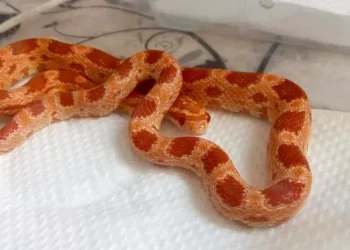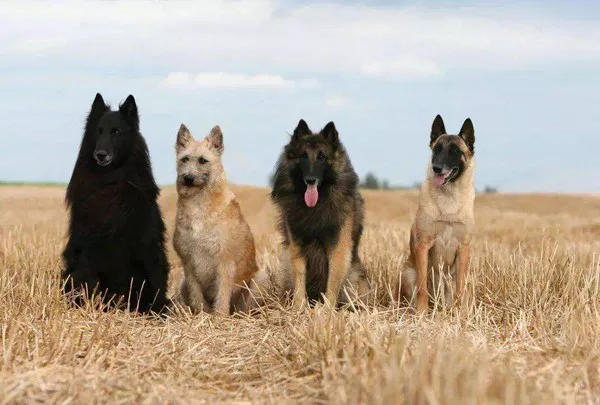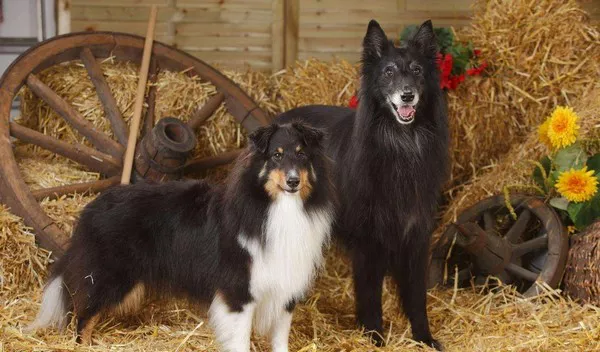When it comes to fascinating and unique snake species, the hognose snakes are among the most intriguing. Known for their distinctive upturned snouts, their quirky behaviors, and fascinating defensive tactics, hognose snakes have earned a place in the hearts of reptile enthusiasts. Among the various species of hognose, two stand out: the Eastern hognose (Heterodon platirhinos) and the Plains hognose (Heterodon nasicus). While these two species share a number of similarities, they also have important differences in their appearance, behavior, habitat, and care requirements. In this article, we’ll delve into the characteristics of both species to help you understand what sets them apart.
1. The Hognose Snake Family: An Overview
Before diving into the specifics of the Eastern and Plains hognose, it’s helpful to understand the broader family of hognose snakes. Hognose snakes belong to the family Colubridae, which is one of the largest snake families, encompassing hundreds of species. These snakes are primarily known for their unique upturned snouts, which they use to root around in the soil while hunting for food, typically small amphibians, insects, and reptiles. Their behavior, appearance, and feeding habits are closely linked to their environment.
Hognose snakes are non-venomous and, despite their intimidating appearance, pose no real threat to humans. They are known for their dramatic defensive displays, including hissing, flattening their heads, and even playing dead, all strategies designed to ward off predators.
2. Eastern Hognose Snake (Heterodon platirhinos)
Appearance and Size
The Eastern hognose is one of the more commonly recognized species in the hognose family. It is typically found in the eastern United States, ranging from southern Canada to Florida and as far west as Texas. Eastern hognoses are medium-sized snakes, usually measuring between 18 and 33 inches (46 to 84 cm) in length, although some individuals may grow longer.
The body of an Eastern hognose is stocky and robust, with a characteristic upturned snout that gives the snake its name. The coloration of these snakes can vary, but they generally have a background color that ranges from gray to light brown, often with darker markings along the back and sides. The underbelly is lighter, and their scales often appear keeled (having a rough texture), which contributes to their overall appearance.
The Eastern hognose’s head is broad, and its snout is slightly pointed, which helps it in digging and foraging in sandy or loose soils. Males tend to be slightly smaller than females, and sexual dimorphism in this species is not very pronounced.
Habitat and Distribution
The Eastern hognose snake can be found in a variety of habitats, ranging from sandy and loamy soils to woodlands, grasslands, and even suburban areas. They are commonly seen in areas with dense vegetation, where they can burrow into the soil or leaf litter to hide. Eastern hognoses prefer areas with loose soil, as they use their upturned snouts to dig for prey or burrow for shelter.
While they can adapt to urban and suburban environments, they are often found in regions with fewer human disturbances, such as grasslands, open woodlands, and the edges of forests. They are particularly abundant in the southeastern United States, where their presence is most noted in states like Florida, Georgia, and the Carolinas.
Diet and Feeding Habits
Eastern hognoses are primarily carnivores with a diet consisting mainly of amphibians, small reptiles, and insects. They are known to feed on toads, frogs, and even small lizards. Their feeding behavior is often linked to their ability to dig and search for prey hidden beneath the soil or in the underbrush.
Their primary hunting method involves using their upturned snout to dig through soil and leaf litter to uncover amphibians and insects. They also have an interesting ability to consume toads, which are distasteful to many predators due to their toxic secretions. Eastern hognoses, however, have evolved to tolerate the toxins in toads and are able to consume them without issue.
Defensive Behavior
Like many hognose species, Eastern hognoses have a dramatic defensive display that helps protect them from predators. When threatened, they may hiss loudly, flatten their necks and bodies to appear larger, and even “play dead.” This behavior is a form of thanatosis, or the act of feigning death, and it is one of the most striking features of hognose snakes.
During the “playing dead” routine, the Eastern hognose will often roll onto its back, expose its belly, and open its mouth, sometimes even emitting a foul-smelling secretion from its cloaca. This behavior is intended to convince predators that the snake is dead and no longer worth pursuing. Once the threat has passed, the snake will often right itself and resume normal activities.
3. Plains Hognose Snake (Heterodon nasicus)
Appearance and Size
The Plains hognose snake, found primarily in the central United States, is another member of the hognose family that shares many similarities with the Eastern hognose but has a few distinct differences. These snakes are typically smaller than their Eastern cousins, with adult Plains hognoses generally reaching lengths of 14 to 24 inches (35 to 61 cm), although some individuals can grow larger.
Plains hognoses have a similar appearance to the Eastern hognose, with a broad, triangular head and a prominent upturned snout. However, their coloration tends to be more variable. The background color of the Plains hognose can range from light tan to gray, often with darker markings or a pattern that helps it blend into its environment. Some individuals have lighter or darker bands along their bodies, while others exhibit a more uniform coloration. Their bellies are usually lighter than their backs, and like the Eastern hognose, their scales are keeled.
Males and females of the Plains hognose are typically similar in size, with only subtle differences between them. However, as is common in many snake species, females may grow slightly larger than males.
Habitat and Distribution
The Plains hognose snake is native to the Great Plains and surrounding areas, including parts of Nebraska, Kansas, and eastern Colorado. Unlike the Eastern hognose, which prefers more varied habitats, the Plains hognose is typically found in more open, dry areas with sandy soils, prairies, grasslands, and even agricultural fields. These snakes are often associated with areas that offer a lot of ground cover, such as tall grasses or sparse vegetation.
Plains hognoses are also known to inhabit some semi-arid regions, where they can find burrows and shelter in loose soils. While they are often found in more arid environments than Eastern hognoses, they will seek out shaded areas during the hottest parts of the day to avoid overheating.
Diet and Feeding Habits
Like their Eastern counterparts, Plains hognoses are carnivores that prey on small amphibians, reptiles, and invertebrates. Their diet primarily consists of toads, frogs, and insects. Plains hognoses are particularly adept at hunting toads, which are often abundant in their habitat. Just like the Eastern hognose, they are able to tolerate the toxins produced by toads and can safely consume them without ill effects.
The Plains hognose uses a similar technique as the Eastern hognose to capture prey. By using their upturned snouts, they dig through the soil and leaf litter to uncover hidden amphibians or other prey. They have also been observed to hunt and feed on other small vertebrates, such as lizards and snakes.
Defensive Behavior
The defensive behaviors of the Plains hognose are strikingly similar to those of the Eastern hognose. When threatened, Plains hognoses will often hiss loudly, inflate their bodies, and flatten their heads in an attempt to appear larger. If this display does not deter the perceived threat, the Plains hognose will roll onto its back and “play dead.” In some cases, the snake may even secrete a foul-smelling fluid from its cloaca to further convince predators that it is not worth eating.
The “playing dead” behavior in Plains hognoses is particularly dramatic. When threatened, they often remain motionless for extended periods, seemingly lifeless. Once the danger has passed, they may slowly return to life and resume normal activities.
4. Key Differences Between Eastern and Plains Hognose Snakes
While the Eastern and Plains hognose snakes share many similarities, there are several key differences that set them apart.
1. Size and Appearance
- Eastern hognose: Typically larger, ranging from 18 to 33 inches (46 to 84 cm). They have a robust, stocky body and a variety of color patterns, but generally with darker markings along the back.
- Plains hognose: Smaller, ranging from 14 to 24 inches (35 to 61 cm), with more variable color patterns, including a range of tan, gray, and light brown colors. Their markings are more distinct, and they often exhibit a more uniform body coloration.
2. Habitat Preferences
- Eastern hognose: Found in a variety of habitats, including woodlands, grasslands, and suburban areas, with a preference for loose soil and dense vegetation.
- Plains hognose: Prefers more arid, open habitats such as prairies, grasslands, and agricultural fields, often with sandy or loamy soils.
3. Distribution
- Eastern hognose: Found primarily in the eastern United States, from southern Canada to Florida, and as far west as Texas.
- Plains hognose: Native to the central United States, particularly in the Great Plains region, including Nebraska, Kansas, and parts of Colorado.
4. Behavior and Temperament
- Eastern hognose: Known for its dramatic defensive behaviors, including hissing, head flattening, and playing dead. It tends to be slightly more docile compared to the Plains hognose.
- Plains hognose: Also exhibits dramatic defensive behaviors but is generally more reactive when threatened. The “playing dead” display can be more prolonged and dramatic.
Conclusion
Both the Eastern and Plains hognose snakes are fascinating creatures that share many similarities but also have distinct differences. Whether you are a snake enthusiast, a pet owner, or simply curious about these remarkable reptiles, understanding the nuances between the two species can enhance your appreciation for their unique adaptations and behaviors.
While the Eastern hognose is typically larger and found in more diverse habitats, the Plains hognose is smaller and prefers the open, dry expanses of the central United States. Despite their differences, both species share common defensive behaviors and hunting tactics that make them stand out among other snakes.
By understanding the unique characteristics of each species, you can better appreciate their role in the ecosystem and their fascinating evolutionary adaptations. Whether you encounter these snakes in the wild or as part of a reptile collection, their dramatic defense mechanisms and distinctive appearance make them unforgettable members of the snake world.
Related Topics:
























